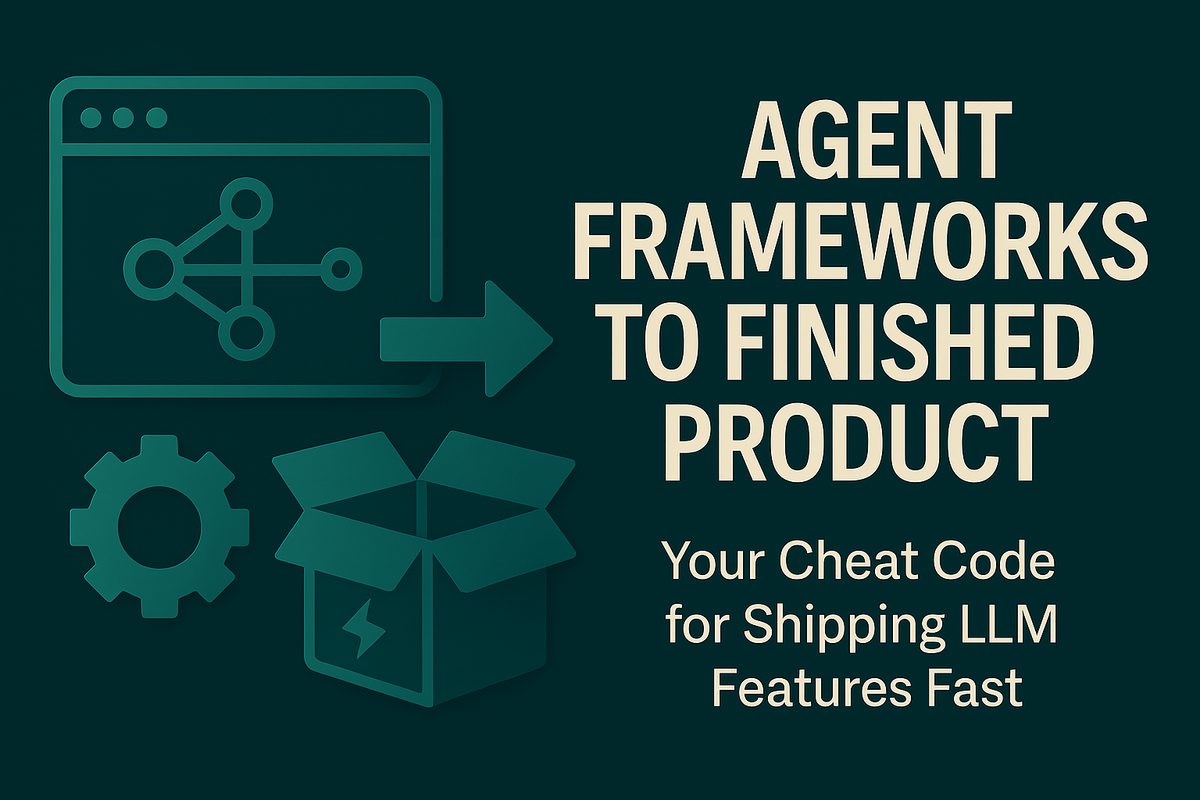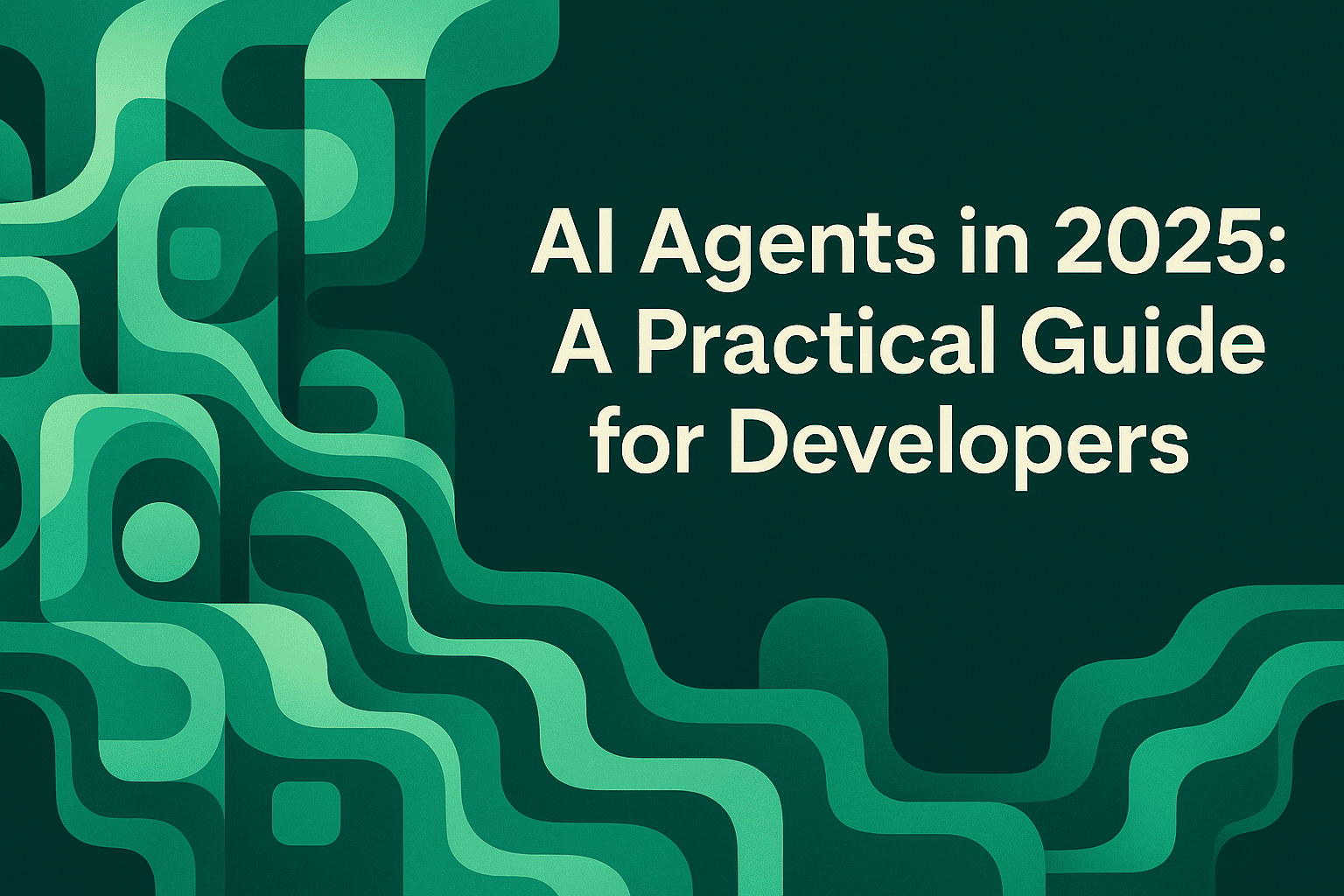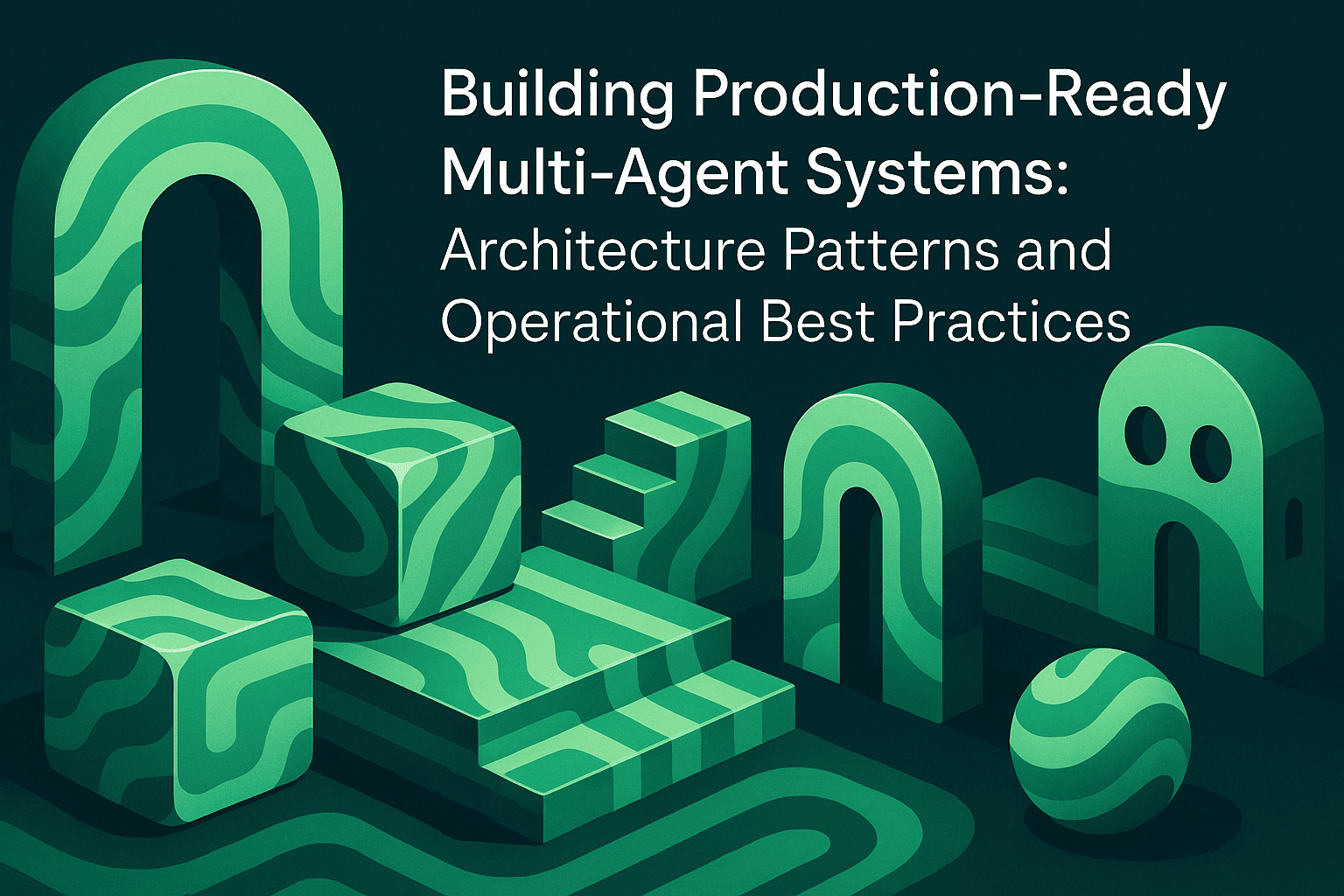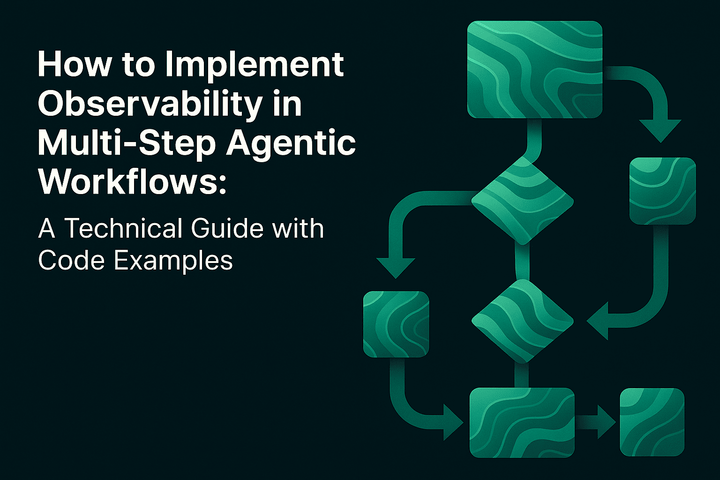Agent Frameworks to Finished Product: Your Cheat Code for Shipping LLM Features Fast

Launching an LLM feature is easy. Scaling one so it never blows your SLO, budget, or brand? That takes a plan. The smartest shortcut is to lean on battle-tested open-source frameworks for agent logic, then bolt everything to Maxim for simulation, evaluation, and observability. This guide shows how six popular frameworks, LangChain, LangGraph, OpenAI Agents SDK, n8n, Gumloop, and Agno, fit into a modern product lifecycle and where Maxim’s integrations shave months off delivery.
Table of Contents
- Why Agent Frameworks Matter in 2025
- A Six-Phase LLM Product Lifecycle
- Six Frameworks Every Builder Should Know
- LangChain
- LangGraph
- OpenAI Agents SDK
- n8n
- Gumloop
- Agno
- How Maxim Glues the Stack Together
- Integration Playbooks You Can Copy-Paste
- Product Development Playbook
- Production Patterns That Keep Costs Low
- Boss Checklist Before You Ship
- Resources and Next Steps
1. Why Agent Frameworks Matter in 2025
The open-source agent boom is real. GitHub shows LangChain racing past 115 k stars, while LangGraph and CrewAI trend on the Hugging Face Open LLM Leaderboard. Markets and Markets pegs the global agent market at nearly $8 billion by 2025. Teams that treat agents as infrastructure, not weekend hacks, will own the upside.
Open-source frameworks save you from reinventing:
- Memory and vector retrieval plumbing
- Tool calling and function schemas
- Multi-agent orchestration
- Retry, rate-limit, and caching logic
But frameworks alone won’t hit your SLA. That’s where Maxim’s simulation, evaluation, and observability stack fills the gaps.
2. A Six-Phase LLM Product Lifecycle
| Phase | Goal | Typical Pain Point |
|---|---|---|
| Ideation | Pick a language-first KPI | Fuzzy problem statements |
| Model Selection | Balance latency, cost, accuracy | Vendor lock-in |
| Agent Design | Build prompts, tools, workflows | Debugging multi-step logic |
| Evaluation | Prove quality at scale | Manual eyeballing |
| Deployment | Serve traffic without meltdowns | Rate limits and cold starts |
| Observability | Catch drift and regressions | Missing traces |
Agent frameworks turbo-charge Phase 3. Maxim owns Phases 4 and 6 and stitches the rest together.
3. Six Frameworks Every Builder Should Know
3.1 LangChain
- What it is: Modular toolkit for chaining LLM calls, tools, and memory.
- Docs & repo: https://python.langchain.com & https://github.com/langchain-ai/langchain
- Why it wins: Plug-and-play agents (ReAct, SQL, RAG); seamless swap between GPT-4o, Claude 3, or Llama 3; huge community.
- Maxim in action: Evaluation Workflows for AI Agents shows a LangChain pipeline graded in Maxim Experimentation.
3.2 LangGraph
- What it is: Graph-based orchestration layer on LangChain primitives.
- Repo: https://github.com/langchain-ai/langgraph
- Why it wins: Visualizes branching flows; async edges without custom event loops; perfect for multi-agent pipelines.
- Maxim in action: Node-level traces surface in the Observability dashboard.
3.3 OpenAI Agents SDK
- What it is: Official toolkit for schema-validated agents with function calling.
- Docs: https://platform.openai.com/docs/assistants
- Why it wins: Typed JSON contracts; first-class threading; battle-tested at scale.
- Maxim in action: Auto-evals grade JSON outputs for accuracy and policy compliance—see AI Agent Quality Evaluation.
3.4 n8n
- What it is: Low-code workflow automation now packed with LLM nodes.
- Site: https://n8n.io
- Why it wins: Drag-and-drop UI, 350+ integrations, cron and webhook triggers.
- Maxim in action: Synthetic events from Simulation & Evaluation hammer your n8n flow to reveal edge-case bugs early.
3.5 Gumloop
- What it is: Visual builder for browser agents that click, type, and scroll like power users.
- Docs: https://gumloop.ai/docs
- Why it wins: Browser-level automation; built-in RAG; designers can prototype without Python.
- Maxim in action: UX journeys plus model scores appear side-by-side when Gumloop logs stream into Maxim auto-evals.
3.6 Agno
- What it is: Lightweight Python framework for financial and analytical chat workflows.
- Repo: https://github.com/agnolang/agno
- Why it wins: Domain primitives for tickers, filings, and market data; multi-agent collaboration baked in.
- Maxim in action: Full walk-through in “Making a Financial Conversation Agent using Agno & Maxim.”
4. How Maxim Glues the Stack Together
| Maxim Module | Job | Framework Touchpoints |
|---|---|---|
| Experimentation | Prompt IDE, version control, A/B testing | Imports LangChain, LangGraph, and OpenAI prompt files |
| Simulation | Generate thousands of scenarios | Sends synthetic events to n8n and Gumloop webhooks |
| Evaluation | Auto metrics + human review | Scores outputs from every framework above |
| Bifrost Gateway | Fast multi-provider routing | Smart retries across GPT-4o, Claude 3, and Llama 3 |
| Observability | Token-level traces, drift alerts | Captures node outputs, costs, and latency |
One dashboard. Zero guesswork.
5. Integration Playbooks You Can Copy-Paste
5.1 LangChain + Maxim Experimentation
from maxim_sdk import Maxim
from langchain.chat_models import ChatOpenAI
from langchain.agents import initialize_agent, Tool
from langchain.tools import DuckDuckGoSearchRun
maxim = Maxim(api_key="YOUR_MAXIM_KEY")
llm = ChatOpenAI(model="gpt-4o-mini")
tools = [Tool(
name="search",
func=DuckDuckGoSearchRun(),
description="Search the web"
)]
agent = initialize_agent(tools, llm, agent_type="react")
session = maxim.create_session("support_demo")
for prompt in open("support_prompts.txt"):
response = agent.run(prompt.strip())
session.log(prompt=prompt, response=response)
session.evaluate(metric_set="support_quality_v1")
5.2 LangGraph + Maxim Observability
from maxim_sdk import Tracer
from langgraph.graph import END, Graph
graph = Graph()
@graph.node
def fetch_docs(state):
Tracer.log("fetch_docs", state)
return state
@graph.node
def summarize(state):
Tracer.log("summarize", state)
return state
graph.edge(fetch_docs, summarize)
graph.edge(summarize, END)
graph.run(seed_state={})
5.3 OpenAI Agents SDK + Maxim Auto-Evals
import openai, os
from maxim_sdk import Maxim
openai.api_key = os.getenv("OPENAI_KEY")
maxim = Maxim(api_key="YOUR_MAXIM_KEY")
assistant = openai.beta.assistants.create(
name ="TravelBot",
tools =[{"type": "function", "function": my_schema}],
model ="gpt-4o",
instructions="You are a travel planner."
)
run_id = openai.beta.threads.runs.submit(...)
maxim.evaluate_openai_run(run_id, metric_set="json_schema_v2")
5.4 n8n Workflow Simulation
- Create a webhook node in n8n.
- Paste the URL into Maxim Simulation.
- Upload 10 000 synthetic payloads.
- Hit Run and watch failure clusters pop up in the report.
5.5 Gumloop UX + Model Duo
- Build a checkout bot in Gumloop.
- Enable “Send logs to Maxim.”
- Run user or synthetic tests.
- Heat-maps and hallucination scores render in one view.
5.6 Agno Financial Agent
Clone the repo from the blog tutorial, drop your keys, point evaluation to Maxim, ship a finance-ready bot before lunch.
6. Product Development Playbook: From Hack to General Availability
Shipping an agent prototype is easy. Turning that proof-of-concept into a audited, SLA-backed feature is real product work. Below is the playbook we use with customers to move from whiteboard to GA without detours.
6.1 Define the Minimum Lovable Product (MLP)
Write one sentence that captures the user outcome and its success metric. Example: “Cut average ticket handle time from 8 minutes to 5 minutes.” If the goal cannot be measured, it is not an MLP. Capture the metric and log it in your Maxim Experimentation project notes so every prompt change ties back to the KPI.
6.2 Assemble a Cross-Functional “Agent Pod”
• Product manager owns the KPI and roadmap
• ML engineer handles prompt chains, fine-tuning, and model selection
• Backend engineer integrates Bifrost and writes guardrail services
• UX designer maps user journeys in Gumloop or Figma
• QA and compliance join every sprint review
The pod meets daily until launch. All prompts, test runs, and costs flow through a shared Maxim workspace so nobody chases screenshots in Slack.
6.3 Sprint 0 – Data and Guardrails
• Identify data sources, label sensitive fields, and store retrieval chunks in a vector DB
• Configure Maxim Simulation with red-team prompts (see Simulation docs)
• Draft policy guardrails and set pass-fail thresholds on toxicity and hallucination metrics
6.4 Sprint 1 – Interactive Demo
Build an interactive agent in LangChain or OpenAI Agents SDK, wire it to Maxim Experimentation, and run nightly auto-evals. Ship an internal demo to confirm latency budgets and UX flow. Reject scope creep until the demo beats your baseline KPI in dev.
6.5 Sprint 2 – Closed Beta
Route 5–10 % of real traffic through the agent using Bifrost’s weighted routing. Monitor P90 latency, cost per call, and failure clusters in Maxim Observability. Add a rollback toggle that flips traffic back to the legacy path within five minutes.
6.6 Sprint 3 – Scale Up and Harden
• Turn on semantic caching and hybrid model routing to shave cloud spend
• Add human-in-loop reviews for any output flagged by auto-evals
• Run soak tests with 50 k synthetic payloads from Maxim Simulation to expose throughput ceilings
6.7 Sprint 4 – General Availability
Lock the prompt version, freeze model parameters, tag the Maxim eval run that clears all gates, and sign off with legal. Publish the changelog, flip traffic to 100 %, and leave alerting thresholds on.
For a real-world example, see how Comm100 shipped an AI support agent in eight weeks using this flow: https://www.getmaxim.ai/blog/shipping-exceptional-ai-support-inside-comm100s-workflow.
Adopt this playbook, keep every step measurable, and you will avoid the graveyard of “cool demo, dead in prod” AI projects.
7. Production Patterns That Keep Costs Low
- Token budgets: Trim system prompts; use retrieval to feed only needed context.
- Semantic caching: Bifrost returns cached answers for duplicate queries.
- Hybrid models: Route free-tier traffic to a 7 B model, premium users to GPT-4o.
- Streaming responses: Stream tokens to users, log final output to Maxim.
- Selective evals: Full sweeps nightly; smoke tests on every merge.
8. Boss Checklist Before You Ship
- KPI pinned atop the spec
- Prompts versioned in Maxim Experimentation
- Auto-eval pass rate ≥ 95 %
- Human review for high-risk content
- Bifrost multicloud routing enabled
- P90 latency < 800 ms in Observability
- Drift alerts firing on threshold breach
- Rollback plan tested
- Finance signed off on cost caps
- CTA working: Book-a-demo links click through
9. Resources and Next Steps
Integration Docs
- LangChain: https://www.getmaxim.ai/integrations/langchain
- LangGraph: https://www.getmaxim.ai/integrations/langgraph
- OpenAI Agents SDK: https://www.getmaxim.ai/integrations/openai-agents
- n8n: https://www.getmaxim.ai/integrations/n8n
- Gumloop: https://www.getmaxim.ai/integrations/gumloop
- Agno: https://www.getmaxim.ai/blog/making-a-financial-conversation-agent-using-maxim/
Core Product Pages
- Experimentation Workspace: https://www.getmaxim.ai/products/experimentation
- Simulation & Evaluation: https://www.getmaxim.ai/products/agent-simulation-evaluation
- Observability Dashboards: https://www.getmaxim.ai/products/agent-observability
- Bifrost LLM Gateway: https://www.getmaxim.ai/products/agent-simulation-evaluation#bifrost
Deep-Dive Reading
- EU AI Act draft: https://digital-strategy.ec.europa.eu/en/policies/european-approach-artificial-intelligence
- NIST AI Risk Management Framework: https://nvlpubs.nist.gov/nistpubs/ai/NIST.AI.100-1.pdf
- Stanford HELM Benchmark: https://crfm.stanford.edu/helm/latest/
- IBM Agent Framework Overview: https://www.ibm.com/think/insights/top-ai-agent-frameworks
Ready to see the stack in action? Schedule a live Maxim demo and watch your prototype turn into a production-grade agent before the coffee cools.
Ship smart, test hard, and own your metrics.


